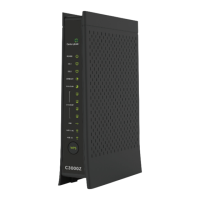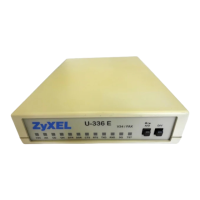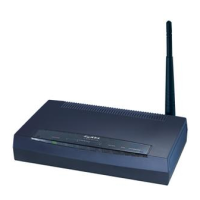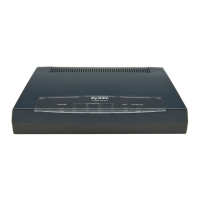eir F1000 Modem User’s Guide
Chapter 2 The Web Configurator
Table 2 Navigation Panel Summary (continued)
Use this screen to view the status of all network traffic going through
the WAN port of the Device.
Use this screen to view the status of all network traffic going through
the LAN ports of the Device.
Use this screen to view NAT statistics for connected hosts.
Use this screen to view VoIP registration, current call statust and
phone numbers for the phone ports.
Use this screen to view the ARP table. It displays the IP and MAC
address of each DHCP connection.
Use this screen to view the routing table on the Device.
Use this screen to view the status of all IGMP settings on the Device.
Use this screen to view the Device’s xDSL traffic statistics.
Use this screen to look at 3G Internet connection status.
Use this screen to change user password on the Device.
Use this screen to enable specific traffic directions for network
services.
Use this screen to enable management via TR-064 on the LAN.
Use this screen to configure SNMP (Simple Network Management
Protocol) settings.
Use this screen to change your Device’s time and date.
Use this screen to configure up to two mail servers and sender
addresses on the Device.
Use this screen to change your Device’s log settings.
Use this screen to upload firmware to your device.
Use this screen to backup and restore your device’s configuration
(settings) or reset the factory default settings.
Use this screen to reboot the Device without turning the power off.
Ping &
Traceroute &
Nslookup
Use this screen to identify problems with the DSL connection. You can
use Ping, TraceRoute, or Nslookup to help you identify problems.
Use this screen to configure CFM (Connectivity Fault Management)
MD (maintenance domain) and MA (maintenance association),
perform connectivity tests and view test reports.
Use this screen to view information to help you identify problems with
the DSL connection.
Use this screen to perform a test on the current WAN connection and
view the result on the screen.

